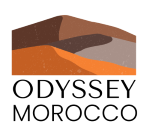Convert 1 BULL to USDT Bull Token to Tether Converter
The USDT to BULL converter table above displays the correlation between the value of Tether in Bull Token through a list of popular conversion amounts, ranging from 1 USDT to 10,000 USDT. The BULL to USDT converter table above displays the correlation between the value of Bull Token in Tether through a list of popular conversion amounts, ranging from 1 BULL to USDT to 10,000 BULL. CoinCodex tracks 38,000+ cryptocurrencies on 200+ exchanges, offering live prices, price predictions, and financial tools for crypto, stocks, and forex traders. To see the latest exchange rate, Bull Token historical prices, and a comprehensive overview of technical market indicators, head over to the Bull Token page. The highest recorded price of Bull Token in Tether was on Jun, , when the BULL price reached its all-time high of 0.0₁₀7765 USDT per 1 BULL. Currently, the BULL/USDT exchange rate is down -79.37% since its ATH. How to convert BULL for USDT? The price of Bull Token in the US is 0.0₁₀1601 USD. $PROS has been showing strong momentum, with a healthy volume increase and consistent upward movement. The BULL to USDT converter table above displays the correlation between the value of Bull Token in Tether through a list of popular conversion amounts, ranging from 1 BULL to USDT to 10,000 BULL. The current price of 1 Bull Token in USDT is 0.0₁₀1602 USDT. If that’s not possible, you can sell Bull Token for a different cryptocurrency (a stablecoin like USDT or USDC is recommended) and use the proceeds to buy Tether. If the price breaks above $0.8300, expect further gains toward $0.8700. You can convert Bull Token to Tether by selling BULL usdtbull for USDT on a cryptocurrency exchange. Bull Token is currently trading on undefined exchanges. The best way to convert BULL for USDT is to use PancakeSwap v2. To see all exchanges where Bull Token is trading, click here. PEOPLE / TetherUS Complete cryptocurrency market coverage with live coin prices, charts and crypto market cap featuring coins on 926 exchanges. You can convert Bull Token to Tether by selling BULL for USDT on a cryptocurrency exchange. The best way to convert BULL for USDT is to use PancakeSwap v2. The most convenient option is to use the BULL/USDT trading pair. CoinCodex tracks 38,000+ cryptocurrencies on 200+ exchanges, offering live prices, price predictions, and financial tools for crypto, stocks, and forex traders. The easiest way to buy 1 BULL with USDT is to convert Bull Token to Tether on PancakeSwap v2. The most convenient option is to use the BULL/USDT trading pair. If that’s not possible, you can sell Bull Token for a different cryptocurrency (a stablecoin like USDT or USDC is recommended) and use the proceeds to buy Tether. The easiest way to buy 1 BULL with USDT is to convert Bull Token to Tether on PancakeSwap v2. If the pair is not available, you can convert Tether to a different cryptocurrency (a stablecoin like USDT or USDC is recommended) and use the proceeds to buy Bull Token. The current price of 1 Bull Token in USDT is 0.0₁₀1602 USDT. The price is calculated based on rates on 1 exchanges and is continuously updated every few seconds. COW/USDT is showing strong bullish momentum with a clean breakout above $1.00. If momentum holds, we could see a move toward higher resistance levels at $1.05 and beyond. How to convert 1 BULL to USDT? $PROS has been showing strong momentum, with a healthy volume increase and consistent upward movement. If the price breaks above $0.8300, expect further gains toward $0.8700. 3X Long Tether Token (USDTBULL) is currently ranked as the #11515 cryptocurrency by market cap. Today it reached a high of $10,510.00, and now sits at null. The price of Bull Token in the US is 0.0₁₀1601 USD. Popular Exchange Rates — Crypto-to-Crypto and Crypto-to-Fiat Converter Complete cryptocurrency market coverage with live coin prices, charts and crypto market cap featuring coins on 926 exchanges. The Bull Token to USDT rate tells you how much Tether is needed to buy 1 BULL. On CoinCodex, you can follow the real-time BULL to USDT rates and use the interactive charts historical price data to improve your technical analysis of this trading pair. The easiest way to sell 1 BULL for USDT is to convert Bull Token to Tether on PancakeSwap v2.
Convert 1 BULL to USDT Bull Token to Tether Converter Read More »
